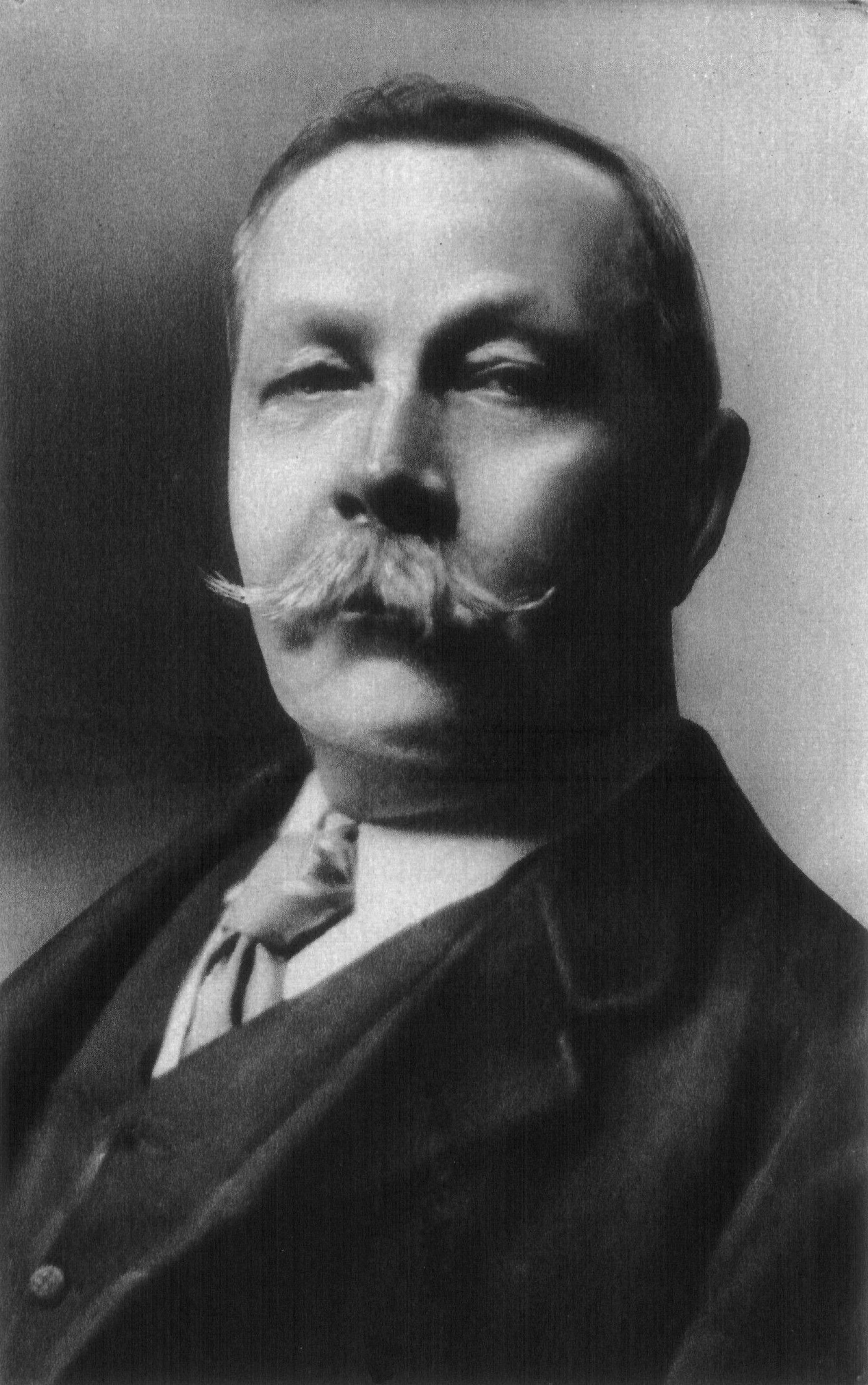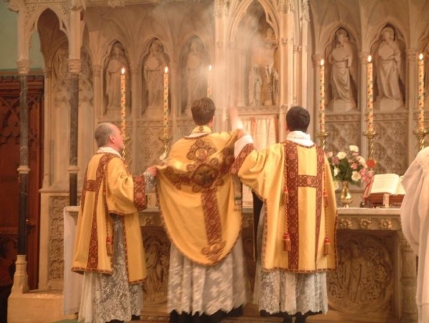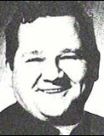By Ed Langlois
It is the feast of Corpus Christi, 1945. In a church in northwest Germany, Corporal John McBride unloads his rifle and leaves it in the pew. Haggard, he makes his way to the Communion rail and kneels, receiving the Body of Christ next to German factory workers and shopkeepers. Three weeks earlier, they had been the enemy. Now it is autumn 2007, almost Veterans Day.
It is the feast of Corpus Christi, 1945. In a church in northwest Germany, Corporal John McBride unloads his rifle and leaves it in the pew. Haggard, he makes his way to the Communion rail and kneels, receiving the Body of Christ next to German factory workers and shopkeepers. Three weeks earlier, they had been the enemy. Now it is autumn 2007, almost Veterans Day.
Jesuit Father John McBride, 82, pushes a frail woman’s wheelchair into her room“I’m a great believer in pastoral care,” the gray-haired Jesuit says. “Whoever your troops are, you take care of them.” After helping liberate Europe in the closing months of World War II, Corporal McBride would return to the Pacific Northwest and get a degree at Gonzaga University. When soldiers were needed for Korea, he would join up, leading troops into battle as a lieutenant. Caring for his wounded men, it occurred to him that he could help people even more if he were a priest. Born in Coeur d’Alene, Idaho, he grew up on a cattle ranch in the Okanagan Valley of British Columbia. He learned to tend cattle and brave the elements.
at Laurelhurst Village care center in Portland. Though his gait is not as steady
as when a young soldier, his mind is keen. By contrast, the woman’s uncertain
memory ranges where it will. The priest listens patiently and she seems
grateful. He gently anoints her hands and places the Body of Christ on her
tongue with steady fingers.
His parents prayed the rosary each evening. The nearby town boasted a beerWar broke out when John McBride was a young teen. He yearned to serve. He did not so much thirst for adventure, he says, as sense a call to duty. He graduated from high school in May 1943 and by July, before he had time to visit a recruiter, he was drafted and inducted. As 1944 was waning, he was a Private First Class, riding a landing craft across the English Channel headed for the northern shore of France. He was 19. In a muddy field near Le Havre, Private McBride showed his buddies the old ranch-hand way of bedding down in hay. It had been six months since D-Day. The Allies were driving the German Army east out of France and Belgium. Optimism was in the air. Private McBride and other soldiers expected a vigorous move into Germany. But a horrendous battle was yet to come. The German code had been cracked. But in mid-December, a furious Nazi offensive centered on the Ardennes Forest at the Belgian borderlands caught the Allies off guard. The Nazis’ aim was to capture Antwerp, surround British and U.S. positions, and then push for a favorable peace accord. The Germans, safely lodged in the woods, used a relentless artillery barrage to shove a salient at one spot in the long Allied line. On maps in newspapers worldwide, that created a bulge back west into Belgium, giving the battle its popular moniker. Into this crisis came Private McBride and other green troops from the 75th Infantry Division. Two regiments from another U.S. division were forced to surrender. The more experienced soldiers gave the young men one piece of advice: “Keep your a-- low.” The troops had been carried by boxcar and truck to the front. Unmanned German buzz bombers were flying overhead and dropping randomly. German artillery from the forest filled the air and landed with fatal thuds.
parlor, a one-room school and a post office.
U.S. artillery fired back, a sound that made McBride feel hopeful. His rifleOn Christmas Day, the fog finally cleared. Torrents of B-17 bombers flew to hit the German positions, a supreme relief to the pinned-down American troops. Later in the day, the planes flew back, many of them dotted with bullet holes and sporting shredded tail fins. “Some of them were just getting by,” Father McBride recalls. By the end of January, the Allies had regained the lost ground and were pushing toward Berlin. The recent Ken Burns documentary on World War II included a section on the Battle of the Bulge. A Jesuit confrere sent a note to Father McBride joking that he saw him in the old footage. “We all looked alike,” Father McBride answered in an email. “Dirty, haggard and cold.” Once the tide turned in the Ardennes, Private McBride’s company was moved south by rail to a town near Strasbourg. There, he was promoted to corporal. On guard duty one night, he saw the sky light up with anti-aircraft fire and witnessed the downing of one of the first German jet aircraft. Had the Luftwaffe been able to develop more of the jets, the outcome of the war may have changed. “My company was chosen to handle situations that needed attention,” Father McBride says. The next stop was the Netherlands, where after the largest Allied air attack he ever witnessed, his unit crossed the Rhine the day after his 20th birthday. The troops liberated the medieval frontier city of Venlo. They then pushed into Germany. The battered unit was given a rest in balmy southern France, where chefs simmered canned meat rations in cognac and wine flowed freely. Father McBride recalls the warm bath and soft bed as heavenly. Flowered hills surrounded Nice. He purchased bottles of perfume to bring back to the girls in his high school class. By April, there was little German opposition left. Surrender came in May. Not long after, news arrived that Private McBride and others would go on a 30-day leave to the U.S. They shipped out. In New York, sultry actress Marlena Dietrich met the returning troops and ended up sitting briefly on Corporal McBride’s broad shoulder. He was to be among the first waves in a land invasion of Japan, which everyone knew would be perilous. At his parents’ ranch in August 1945, news came that Japan had surrendered. There were reports of a new kind of U.S. bomb that had forced the issue. “I couldn’t believe it,” he says of the war’s end. He left the Army in November 1945 and by the start of 1946 was enrolled at Gonzaga University on the G.I. Bill.He and hundreds of other men walked to classes in their fading pea coats and fatigue jackets. He recalls how professors like Jesuit Father Cliff Carroll could make even economics seem exciting. Memories of battles faded. At the same time, he recalled the hard realities of war. U.S. soliders on the move would temporarily kick civilians out of their houses and move in, raiding the larders and wine cellars. Most of all, he recalled his fellow soldiers, the ones who would have risked their lives for him. “Your buddies carry you through,” he says. “You’re all together. You’re doing the thing.” With that in mind, he joined the Reserve Officers Training Corps. He graduated, along with the first women students at Gonzaga, and then signed on to go to Korea, where tensions had flared with the Communists.He was now a second lieutenant, guiding a platoon of 40 men whose former leader had been killed. As a veteran of the Battle of the Bulge, he had high status among the troops, even though he was only five or six years older.
unit fought skirmishes, tried to advance foot by foot, and sought to capture
German soldiers as a way to extract information about enemy positions and plans.
For more than a week, thick and low clouds kept the Allied air forces from
giving support. “An infantry platoon’s war is three hundred yards in front
of you,” Father McBride explains. “You hear very little about anyone
else. There is very little information about the master plan.” It was cold
and dangerous. The company scout was killed and a handful of Private McBride’s
buddies were hurt, including one who lost an eye. The Battle of the Bulge was
the bloodiest single event of World War II for U.S. forces. Fighting would claim
19,000 American lives. “Once bullets are fired, you’re not afraid,”
Father McBride says. “The adrenalin kicks in. Until the adrenalin kicks in,
you’re shi--ing your pants.”
He was firm and demanding, because he knew his men’s lives depended on it. ButIn mid-October, 1950, his unit was part of the battle to hold the port city of Pusan. The company commander had already been killed and Lieutenant McBride had to step up. The troops were advancing at night. Flares would illuminate the sky to give a view of enemy positions. The Yanks were supposed to hit the ground when the lights went up, so the enemy would not pick them up in their sights. Liuetenant McBride was tired of eating dirt, so kept walking. That’s when a North Korean mortar shell hit. Witnesses say that if he had been on the ground, he would have died. As it was, shrapnel and dirt caught him in the face and gave him a concussion. The medic who came to his aid dragged him into a ravine and provided cover with his own body. The sky continued to flash. As he lay there, the groggy Lieutenant McBride could well have thought of the wounded men he had helped. He had written letters home to parents whose sons had died. Or maybe, flashing through his mind like snapshots, were images of camaraderie in a military unit. Perhaps he felt the worn rosary stuffed in his pocket. He thought of life as a priest and belonging to another kind of company. Days later, in a hospital, an Army nurse took the bar off of her own uniform and pinned it to his pajamas. He had been promoted to first lieutenant. A chaplain came by to hear his confessions.
he showed compassion and care. “You don’t eat until your troops are
fed,” he says. “You don’t bed down until your troops are bedded down.” Whenever there was free time, he prayed the rosary. The black was worn off
his beads.
When the priest asked if he was sorry for his sins, the young lieutenantU.S. interests had pushed for no rights for Japan, but Lieutenant McBride heard Magnuson remind them of the Treaty of Versailles, which showed that nations who lose wars must be able to make a living, lest worse things come. He accompanied Magnuson in meetings with the likes of Gen. Douglas MacArthur and Chiang Kai Shek. He left the Army for good in 1952 and soon had plans to enter the Jesuits. His father wept for joy at the decision.After ordination in 1961, he was a high school teacher and pastor in Fairbanks, Alaska, and a retreat leader in Portland. He was a parish priest in Woodburn before answering the call to work in a federal prison, a ministry he would carry out through the 1970s and 80s. Like a soldier, he says, a prison chaplain often needs to possess and teach the art of patience. He became highly respected among guards and prisoners alike, using the same firm but compassionate leadership he employed on the battlefield. He broke up fights and defused riots. “You can’t just wear a white hat,” he explains. “You have to follow regulations. But you can still be humane.” He saw to it that Muslims and prisoners of all kinds of other faiths “got a fair shake.” He retired, as regulations for certain federal employees require once they hit many years of service. From 1991 to 2003, Father McBride was a chaplain at Providence Portland Medical Center. He then started work at three Providence Elderplace sites and Laurelhurst Village. Not long ago, he met a man at the retirement home who had been a Marine in World War II. The man’s son had also become a Marine and had been killed in Vietnam. The father had never learned the specifics of the death, something Father McBride knows is vital for spiritual and emotional health. “He was grieving and grieving and grieving,” the priest explains. Father McBride wrote to the Marines and searched out the son’s company commander. Back came a three-page letter describing the chaotic battle situation and the death. It was a comfort to get some certainty.
answered, “Hell, yes.” After he recovered, he had time in Tokyo to
wander and think. Commanders assigned him as aide to young U.S. Sen. Warren
Magnuson of Washington state, who was in Japan trying to sign maritime and
fishing treaties with the defeated power.
In 1984, on the 40th anniversary of the Battle of the Bulge, Father McBride wentThere, he met a man from Venlo in the Netherlands. When he told the fellow he had helped liberate Venlo in 1945, the man embraced him with tears in his eyes. The friendships forged in the hell of war stand out in the aging priest’s memories. His best friend, a New York City fire chief, had always called him “the hick from Idaho.” Father McBride recalls with great pleasure when his old platoon leader asked him to preside at a daughter’s wedding. Most of his Battle of the Bulge buddies are dead now and fragile health has kept him from attending reunions of the 75th.
back to the Ardennes for commemorations. He met several of the men he knew and
they searched for the spot where they spent that cold Christmas in 1944. It was
hard to find. What had been a surreal scape of rubble and dead animals was by
1984 covered with trees and houses.
One man who served as an 18-year-old private in Lieutenant McBride’s platoon inThe combat tips, tempered in the Ardennes in 1944, included digging deep foxholes, keeping feet healthy and ducking heads low. It all came in handy because the fighting in Korea was rough. “I was so grateful to come out of there alive and I give him great credit for that,” Shields says. Somehow, the retired mailman recalls, Lieutenant McBride was tough and compassionate simultaneously. He would make sure everyone had food and a good place to sleep.
Korea calls the priest one of the best men he’s ever known. “He is more than
just a soldier to me, he’s a saint,” says Richard Shields, a 76-year-old
retired mail carrier who lives in Oshkosh, Wis. Though Lieutenant McBride
relentlessly kept his men in order, and the men chafed at times, Shields is
convinced that the priest saved many troops from being killed.
At reunions of the Seventh Cavalry, Custer’s old outfit, Shields came to admireAt a dinner table in the Portland Jesuit residence where Father McBride lives, the priest admits that he is in the “twilight” of his life. Though his years in the military were short by comparison to the rest of his life, they loom large on his list of satisfactions. “I served my country in wartime and I helped liberate Europe,” he says, placing a flat hand gently on the tabletop. “To me, that is very special. I had the responsibility of leading American troops in combat. That was a privilege.”
Father McBride even more as he learned about the priest’s ministry in parishes,
prisons and hospitals. “I’ve seen a lot of commanders,” Shields
says. “Father McBride is the very best.”
Link to original story (here)









 Officials at Chicago's Loyola University have stopped the circulation of a student magazine because it contained erotic drawings, a report says.
Officials at Chicago's Loyola University have stopped the circulation of a student magazine because it contained erotic drawings, a report says.












